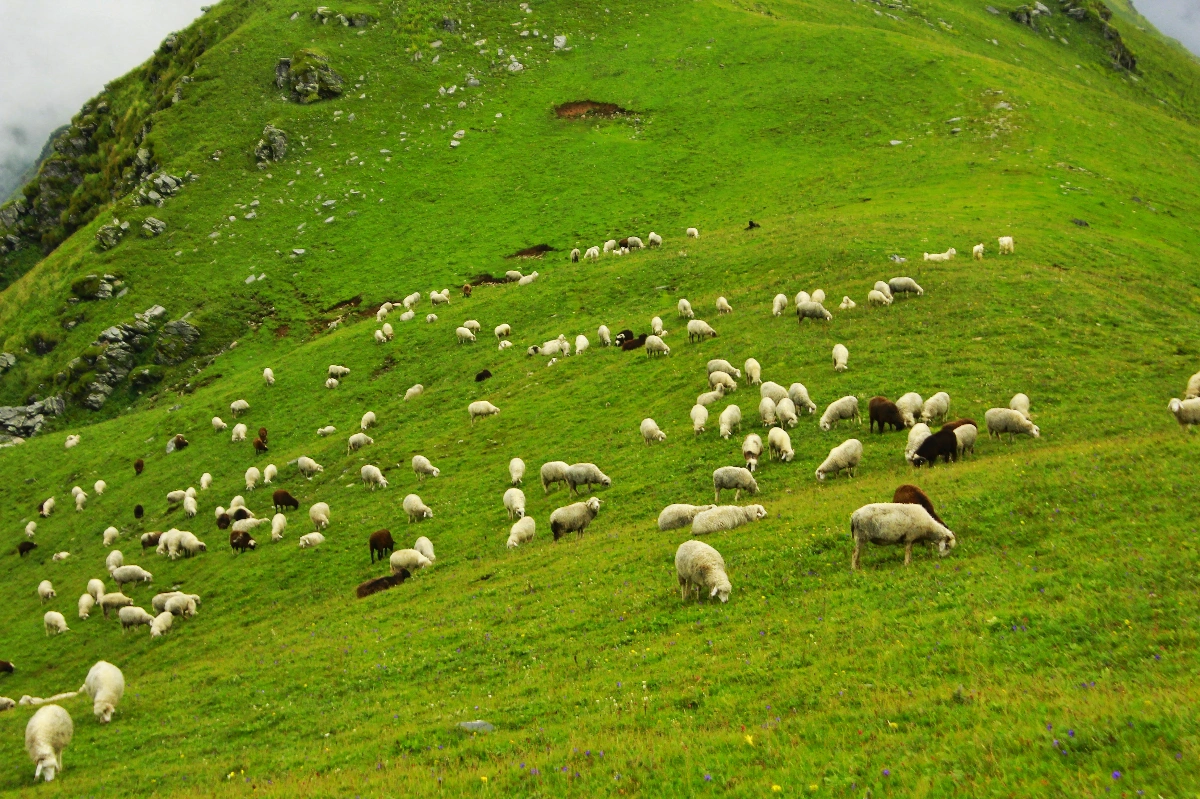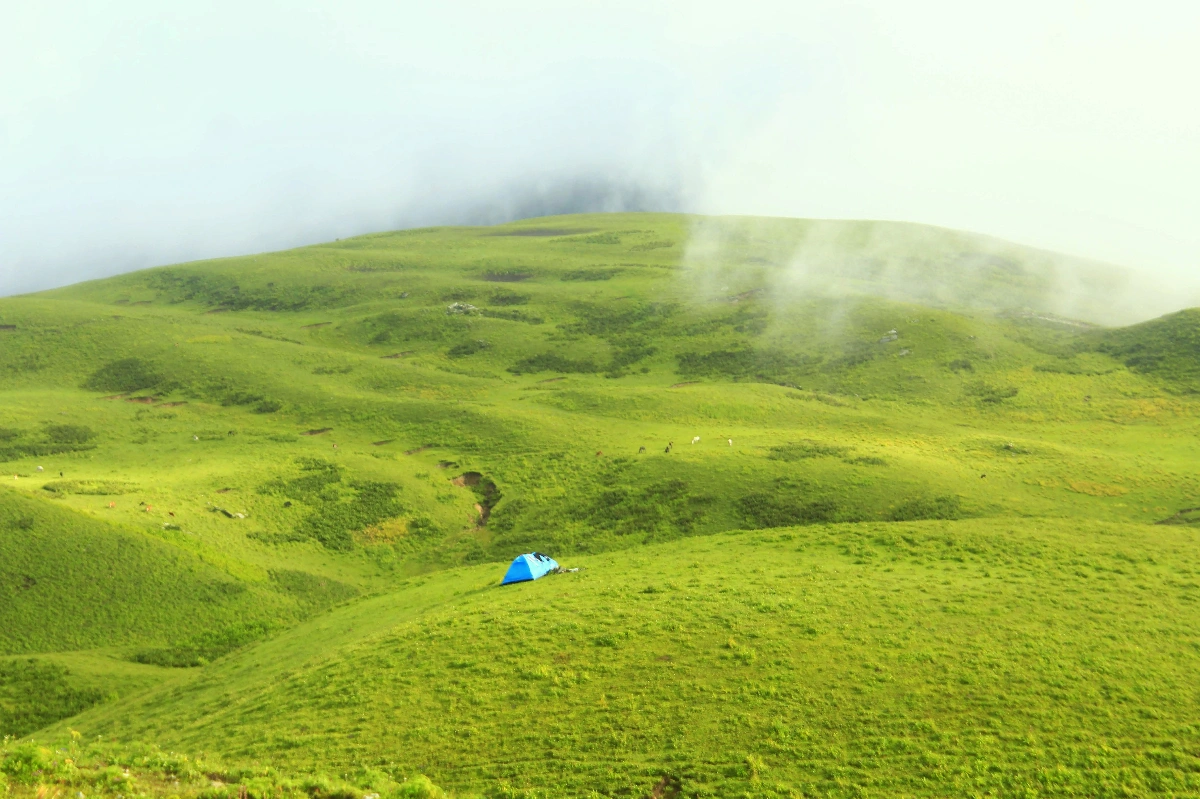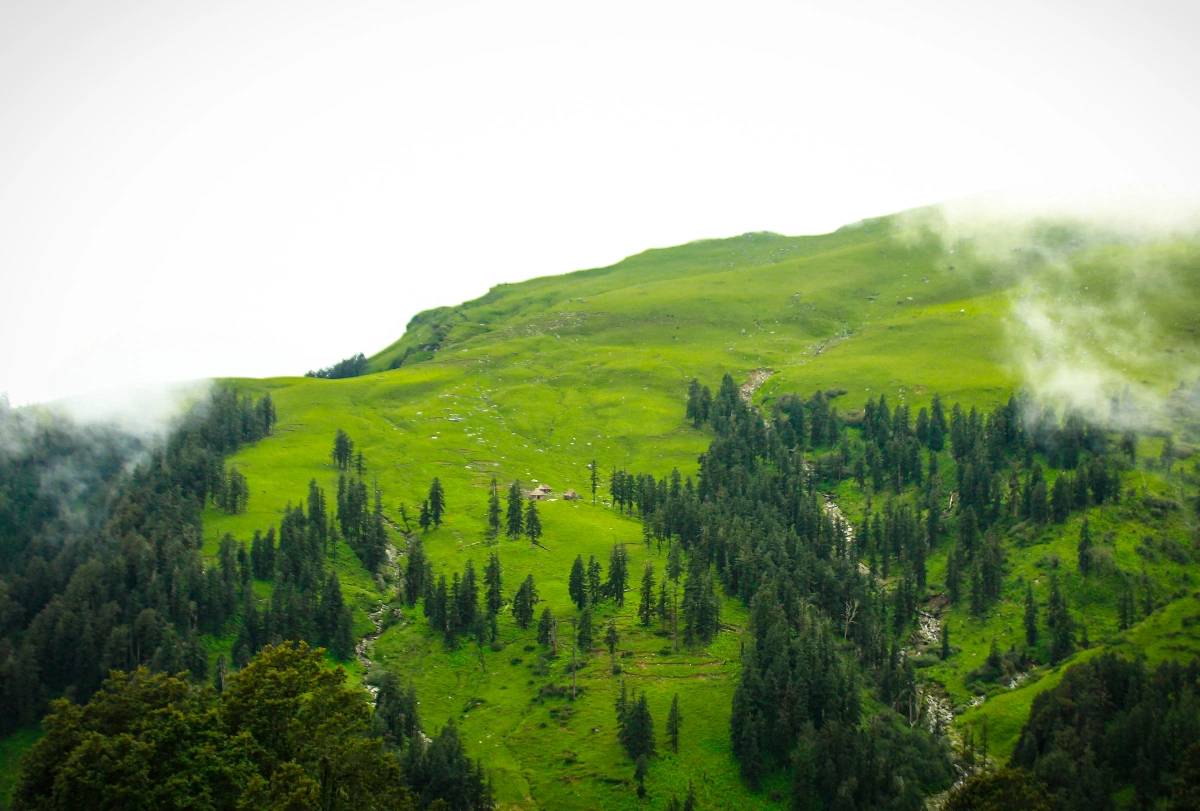Best weekend Getaway for Beginners
1 NIGHT/2 DAYS
3022 Meters
Easy to Moderate
20 KM
Sep-March, March- June
20
Nag Tibba Trek is one of the best weekend gateways trek for beginners to start their trekking adventures. It is a perfect escape near Dehradun for all the adventure seekers who are unsure about planning short treks in the Himalayas. The summit offers a 360° view of snow-capped Himalayan peaks such as Gangotri, Banderpoonch, and Black Peak. “Nag Tibba,” at 3018m, is one of the representative ridge peaks in the foothills of the Garhwal Himalayas. These ranges form a perfect trio with ‘Dhauladhar’ and ‘Pir Panjal,’ ranking among the three principal ranges in the lower Himalayas. Nag Tibba is also mentioned by Australian climber Heinrich Harrer in his popular book, ‘Seven Years in Tibet.’ The book details the mountaineer’s adventurous escape from Dehradun jail to Tibet.
The range owes its name to a Nag Devta Temple. Nagas (serpents) hold a special position in the Vedic stories of Hindu mythology. The locals living here also have a strong belief in Nagas, who are revered as clan gods by many tribes in Uttarakhand. Nag Tibba is mostly visited by trekkers during the winter season, but this trek offers stunning views throughout the year. The trek starts from the quaint village of Pantwari and crosses a popular hamlet known as “The Goat Village.” The Goat Village is a community working towards a conceptually new blend of eco-tourism, agro-tourism, and rural tourism. Every year, the people of The Goat Village perform a ritual in which a goat marriage is organized, celebrated in spectacular Hindu tradition.
Here, you’ll find everything you need to plan your adventure to Nag Tibba. From a day-by-day itinerary of the Nag Tibba trek to essential insights about the Nag Tibba region, this section is your go-to guide. You can explore the complete Nag tibba trek schedule, understand the terrain, and get accurate distance breakdowns for each segment of the trail. Whether you’re a first-time trekker or an experienced adventurer, our detailed overview including high altitude sickness guide will help you prepare mentally and physically for the journey ahead. Get ready to experience the beauty and thrill of the Nag Tibba Trek with confidence.

Barsu

Prince Chowk, Dehradun Railway Station

Dehradun

Jolly Grant Airport

(Summers-25° Max/ 10° Min) (Winters-18° Max/ -5° Min

In Barsu:BSNL, Idea and Vodafone Sketchy Networks of BSNL, Idea and Vodafone are available during the trek from Barsu to Dayara Bugyal.

Barsu Village is the last point that has electricity. Note: Most of the electricity is extremely intermittent and can be absent for most part of the day during winter/late summer (when monsoon starts to set in)

Uttarkashi, on the way to Barsu has last ATM Note: Most of time ATM in hilly regions are not functioning. So withdraw cash before you start your journey to Barsu
Day 1 – Dehradun to Barsu
We start our drive from Dehradun to Barsu early in the morning. The drive is visually appealing as the route mixes changing mountain terrain with the colors of the holy river Bhagirathi as we go deeper into the valley. Our drive ends as we reach the village of Barsu. Barsu is a tranquil village frequented by trekkers as it serves as the base camp for the Dayara Bugyal trek. The locals are devotees of Nag Devta, and the village hosts a temple dedicated to this deity. The day ends with a relaxing dinner and an overnight stay in a homestay.
Day 2 – Barsu to Barnala Tal
The trek starts early in the morning after breakfast. The village fades behind the forest trail as we ascend from Barsu on a well-marked trail. This trail passes through an oak and rhododendron forest, eventually leading to a small meadow. This meadow is home to the beautiful Barnala Tal, a natural high-altitude lake, and the holy Nag Devta Temple at one corner of the lake. The day ends as we set up tents for an overnight stay.
Day 3 – Barnala Tal to Dayara Top and back to Barnala Tal
The Dayara bugyal trek starts through the forest trail in the morning. As we ascend, leaving the forest trail behind, we are greeted with some shepherd huts known locally as Chani. As we pass the huts in the meadow, Dayara Bugyal welcomes us with the backdrop of the snow-capped Himalayan peaks. This lush green expanse of 28 square kilometers hosts streams and rivers that originate in this alpine meadow. The majestic Himalayan peaks, including Srikanth, Gangotri, Draupadi ka Danda, Jaonli, Bandarpunch, and Swargarohini, are visible from the meadow. In summer, we trek through green grass and flowers, while in winter, the trail is covered with a thick blanket of snow. We spend our time at Dayara Top and, after relaxing, trek back to Barnala Tal, our campsite for the night.
Day 4: Barnala Tal to Barsu and Drive to Dehradun
The trek starts early in the morning as we descend from Barnala Tal to the village of Barsu. The local community in Barsu is involved in agriculture, but over recent years, Barsu has seen a surge in tourism. This has led to the development of several guesthouses, providing employment opportunities. Locals also work as guides, cooks, and porters. The day ends as we drive from Barsu to Dehradun, filled with the memories of the beautiful Dayara Bugyal Trek.
Basics Gears
Clothes
Accessories
Others
Mandatory Documents
Cancellation Policy
Refund Policy
The following refund shall be payable to the user in case of valid cancellation as per the guidelines
Note: The above-mentioned refunds are subjected to deductions for any expenses that may have been incurred for hotel booking or transport etc. Refunds are applicable on the total cost and not on the advance amount.Also take care of LEAVE NO TRACE policy.















What makes Dayara Bugyal special?
Dayara Bugyal is one of Uttarakhand’s most beautiful high-altitude meadows, offering breathtaking views of peaks like Bandarpoonch, Srikanth, and Gangotri. The lush green pastures in summer and snow-covered landscapes in winter make it a year-round trekking destination.
What is the base camp for the Dayara Bugyal trek?
While many companies operate this trek from Raithal Village. Team Mountainiax operates the trek from Barsu Village, which is less crowded and offers mesmerizing views of Barnala Tal.
Is this a family trek or suitable for children ?
The Dayara Bugyal Trek is a easy trek suitable for families and children aged 8 years and above, as well as older adults up to 50-62 years, provided they are physically active.
Is camping allowed at Dayara Bugyal?
No, overnight camping at Dayara Bugyal is currently not allowed. A High Court order bans overnight stays in alpine meadows across Uttarakhand to protect the fragile Himalayan ecosystem.
What is the best time to do the Dayara Bugyal trek?
The trek is best year-round, except during monsoon. Spring brings blooming meadows, summer offers pleasant weather, autumn has clear skies with stunning Bandarpunch views, and winter turns it into a snowy wonderland
What nearby places can we explore after the Dayara Bugyal Trek?
After the Dayara Bugyal Trek, you can explore nearby places like Harsil Valley or Gangotri. While these are not included in the regular itinerary, Mountainiax can arrange visits in private batches upon request.
What are the accommodation types during the Dayara Bugyal Trek?
During the Dayara Bugyal Trek, accommodation includes a homestay in Barsu Village at the start, offering a cultural and comfortable experience. During the trek, you will stay in camps, which provide basic facilities for a closer connection with nature.


Our goal is to encourage sustainable tourism in offbeat destinations of the Himalayas. We want more people to get out of the main trekking hubs & experience themselves and the planet on a new more meaningful level.
All Content & Photos Copyrighted by Mountainiax © 2025